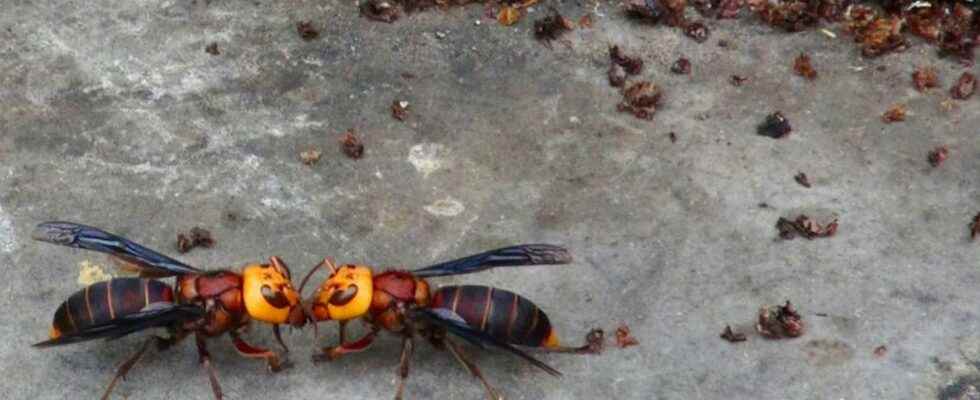You will also be interested
[EN VIDÉO] How do bees make honey? Honey is one of the oldest ways to sweeten food. It is virtually imperishable and it takes a lot of bee work to make. Unisciel and the University of Lille 1 explain to us, with the Kézako program, the stages of its manufacture.
For almost twenty years now, our bees have been living under the threat of the one we call the asian hornet. Vespa velutina. The United States has been struggling for several months with one of its cousins, the giant hornet. The largest species of hornet in the world. Mandarinia Vespa. Also from Asia. Capable of destroying entire colonies of bees in no time.
“They are incredible social insects”emphasizes James Nieh, researcher at the University of California, San Diegoin one communicated. “But their place is not in North America. This is why we seek to eliminate them. » And with his colleagues, he now offers an astonishing method, which relies on thesexual appetite of the little beast.
Here a female Mandarinia Vespa – anesthetized for the experiment – mating with a male, at the bottom of the image. On his back, another male. The opportunity for researchers to isolate the components of the sex pheromone emitted by the female. © James Nieh, University of California, Dong Shihao, Chinese Academy of Sciences, YouTube
Tracking the Asian Hornet Invasion
The researchers have just identified – and made freely available to the entire community – the three main components of sex pheromone of the queen of the Asian giant hornets. They had already done same job on our Vespa velutina. And theacid hexanoic (C6H12O2), octanoic acid (C₈H₁₆O₂) and decanoic acid (C10H20O2) turn out to be compounds that can be easily and immediately deployed in the field. This is also how experiments have made it possible to capture thousands of males attracted by the smell of these compounds.
By reducing the number of males available for breeding, researchers hope to be able to reduce the asian hornet population giants. But by multiplying this type ofbaitthey also intend to understand in which regions and to which speed the invasion occurs. So far they have been reported in Washington State (Seattle) and just north in British Columbia (Vancouver, Canada). But simulations predict that they will soon arrive in Oregon (Portland) and perhaps also in the eastern United States. Thus threatening more and more bees native.
Giant bee-killing hornets spotted in US
giant hornet, Vespa mandarinia, is aptly named. This species is the largest of all social insects. Originally from Asia, it has traveled around the world to the United States, where authorities fear it is taking hold and decimating bee colonies.
Article of Julie Kern published on 06/05/2020
Mandarinia Vespa, nicknamed the giant hornet, is the largest species of hornet in the world and also the largest social insect. Queens can measure more than 5 centimeters long and 7.5 centimeters wide.
This species, which is native to Asia, has traveled around the world to reach Washington State last december. A nest of Mandarinia Vespa was found near the Canadian border. It was the first time that theinvasive species has been seen in the United States.
Since, the Washington State Department of Agriculture set up traps to eradicate the giant hornet before summer. Because this species is known to attack bees but also humans.
The giant hornet, a deadly insect
Every year, in China or Japan, dozens of people die after being stung by a giant hornet. His stinger injects a venom powerful potentially fatal for allergy sufferers or during repeated bites by several insects.
But the most threatened are the bees. A giant hornet can easily kill over a hundred bees or decimate an entire colony in a single attack. Smaller, the bees counterattack by covering the hornets to increase their body temperature and kill them (other species of bees smother them). A technique, called heat balling, in Englishlast resort which is not always effective against the aggressiveness of hornets.
Interested in what you just read?
